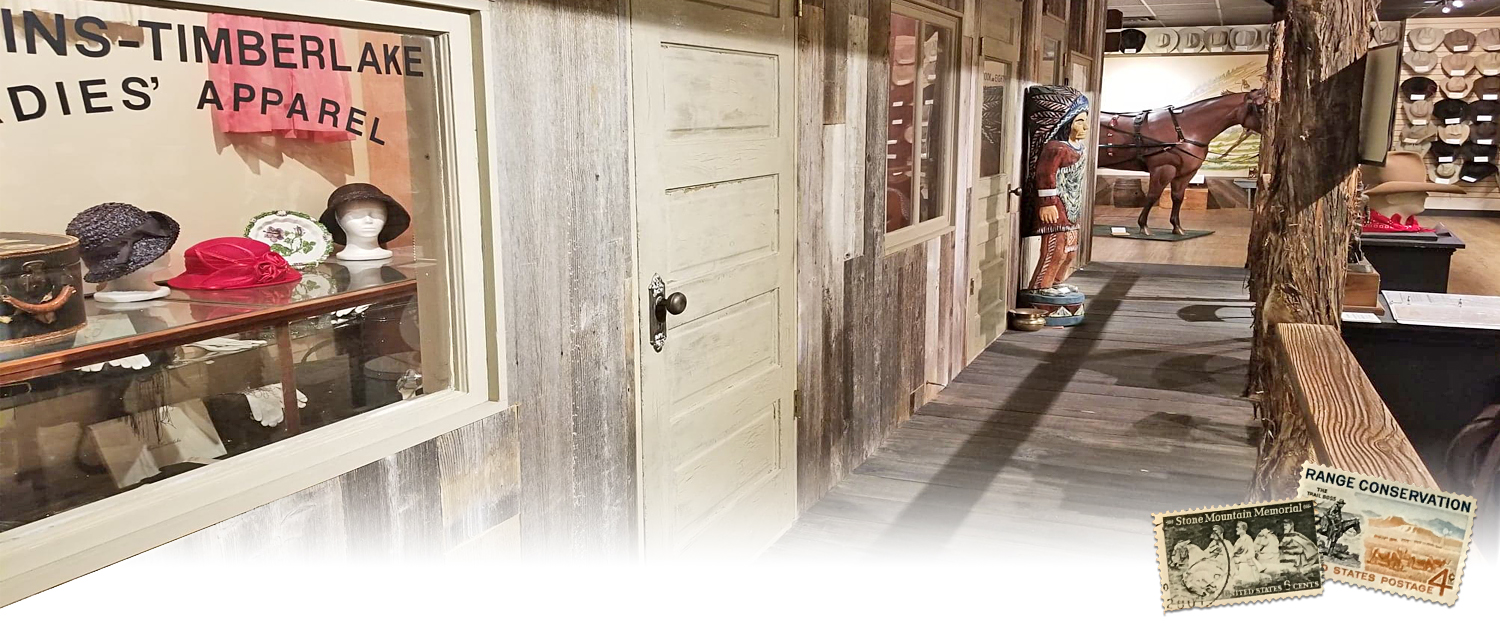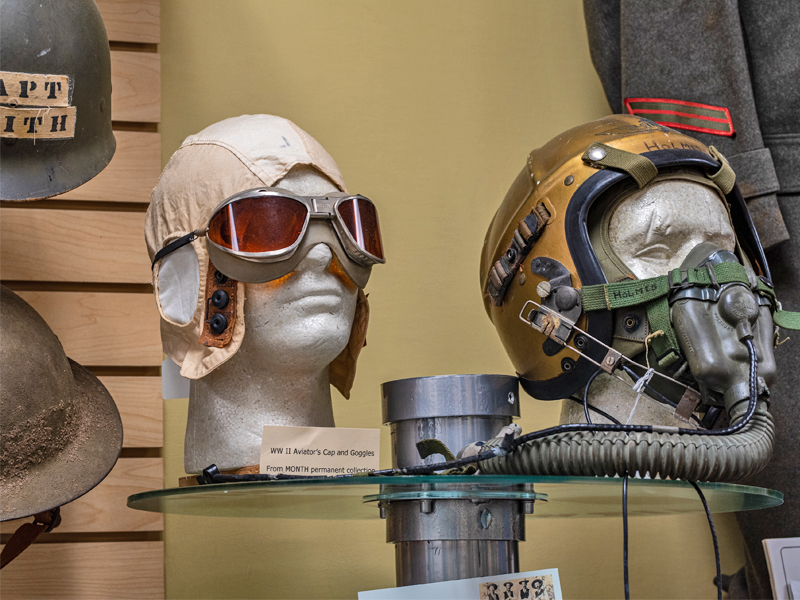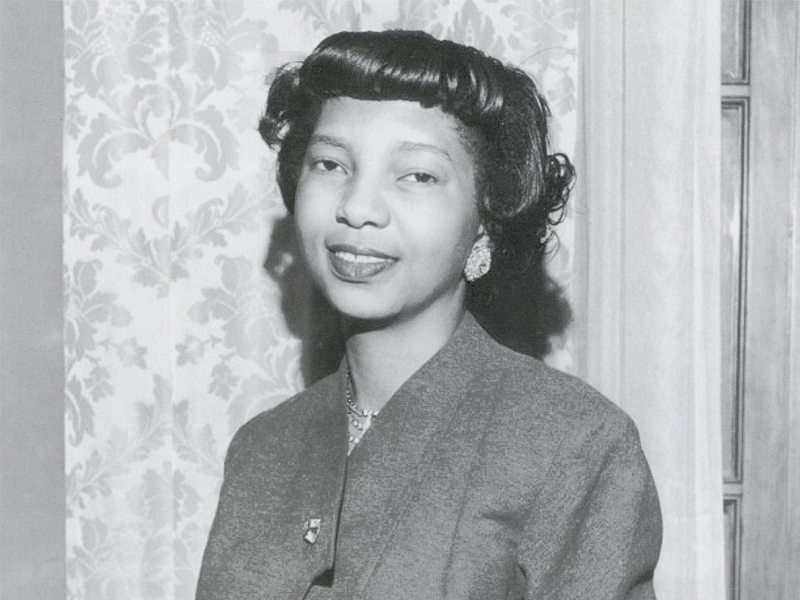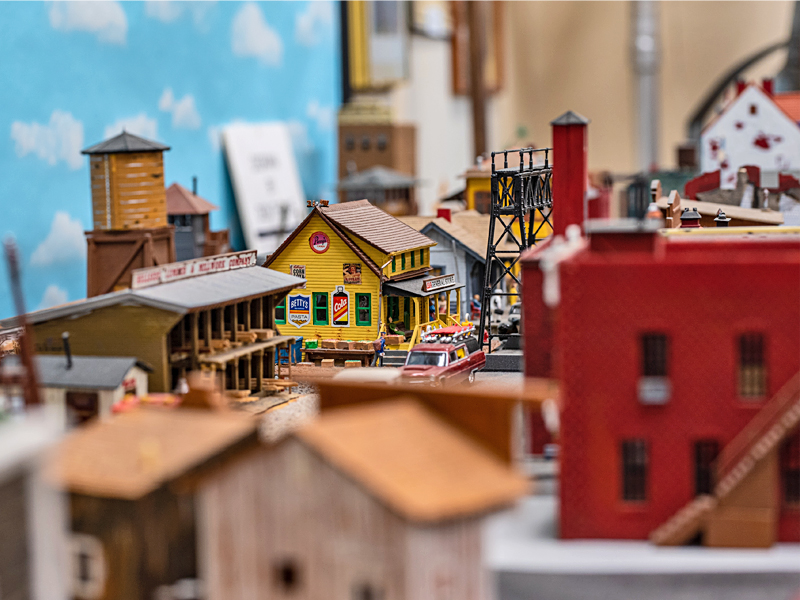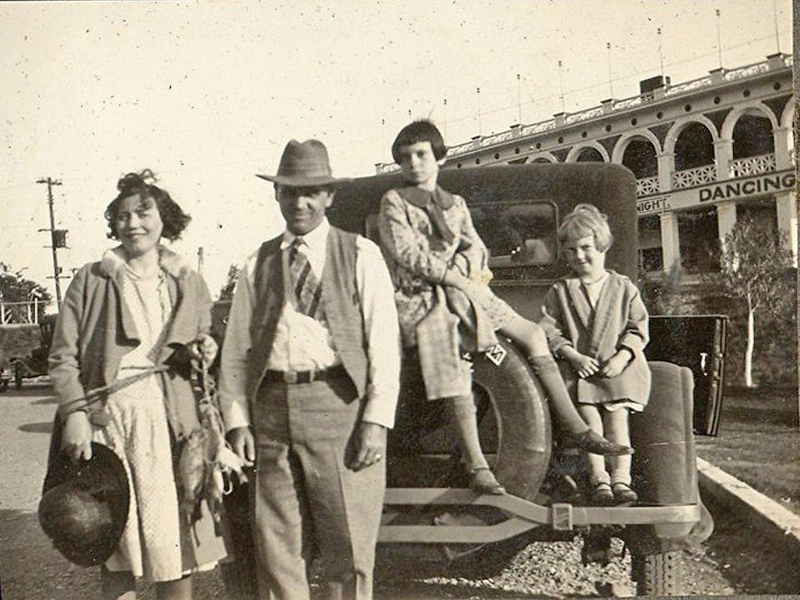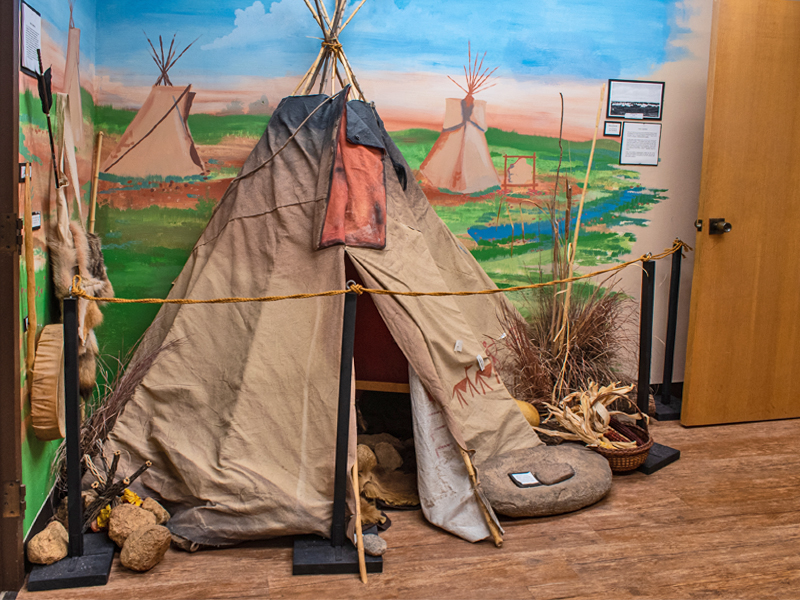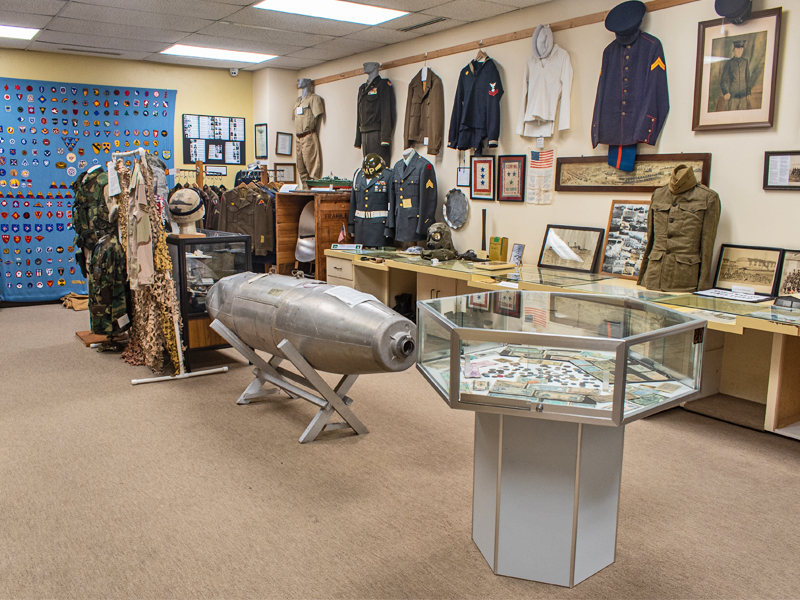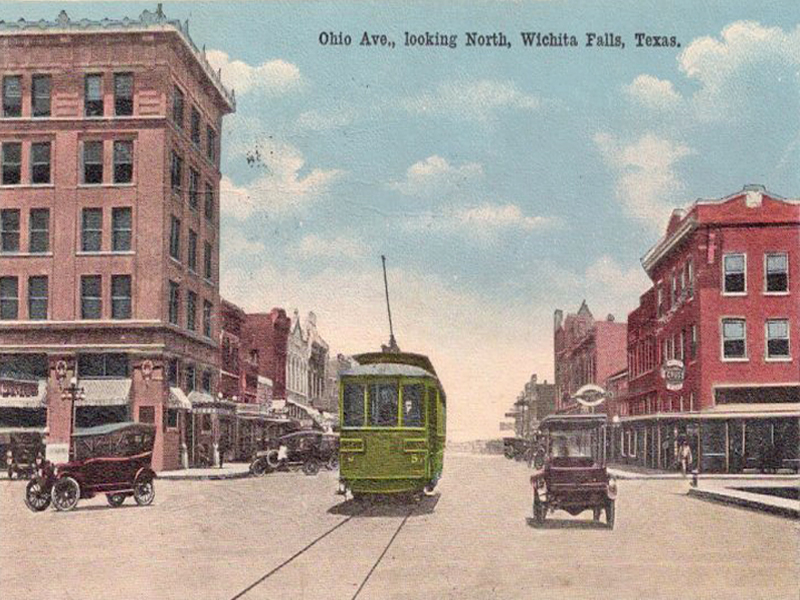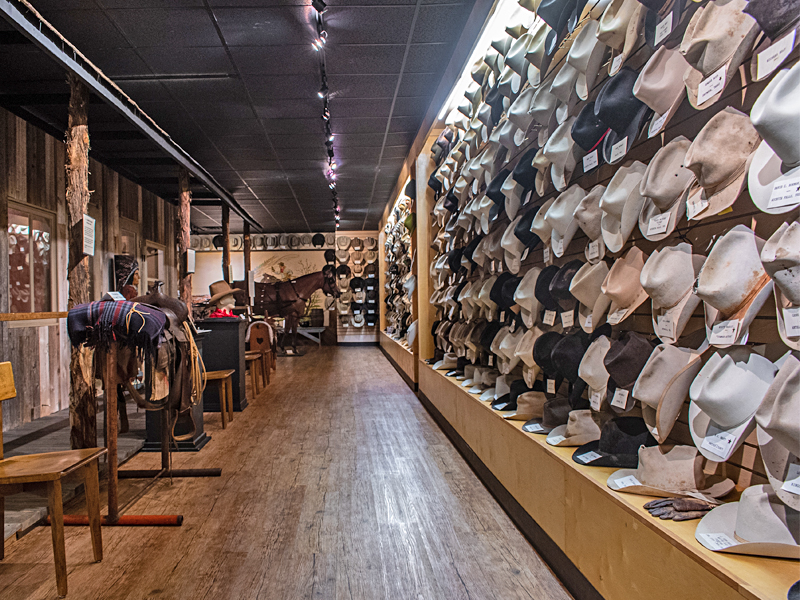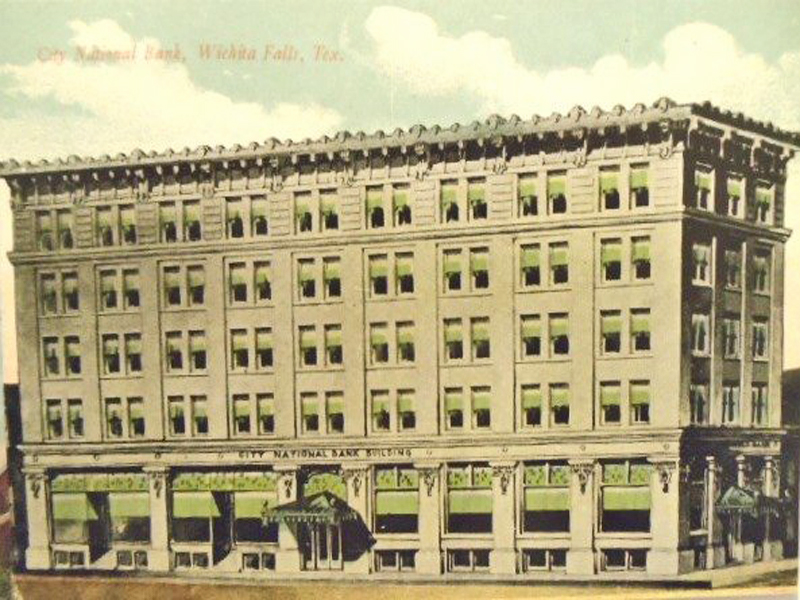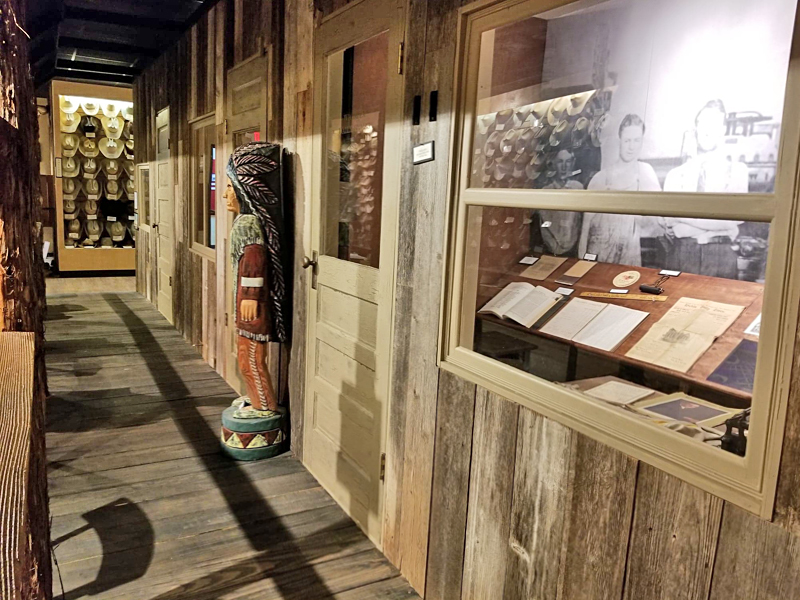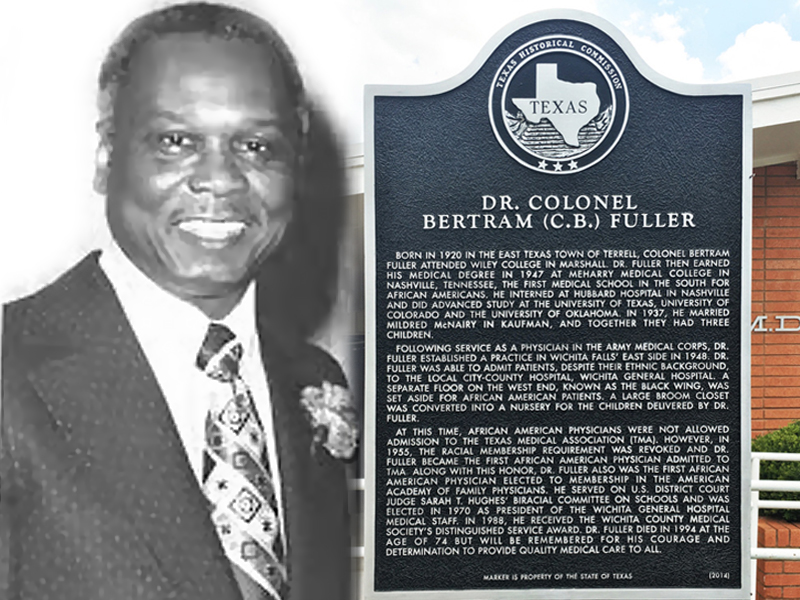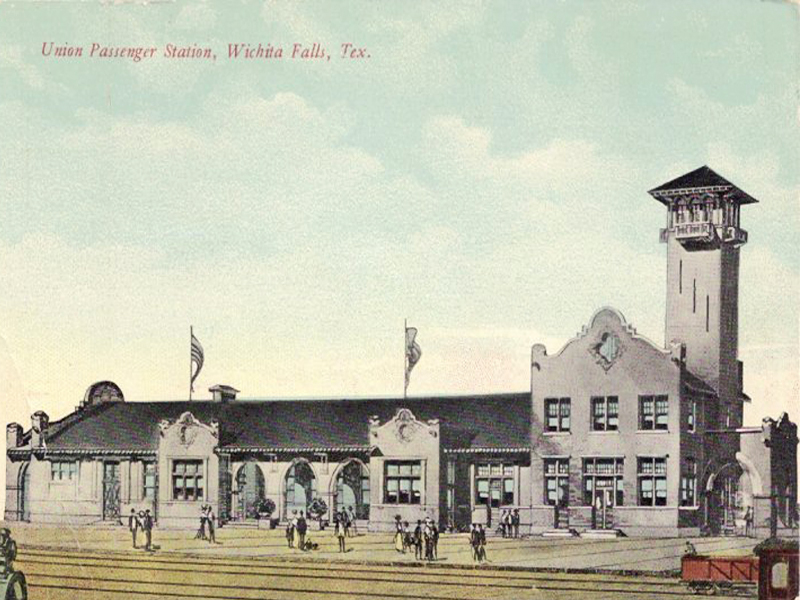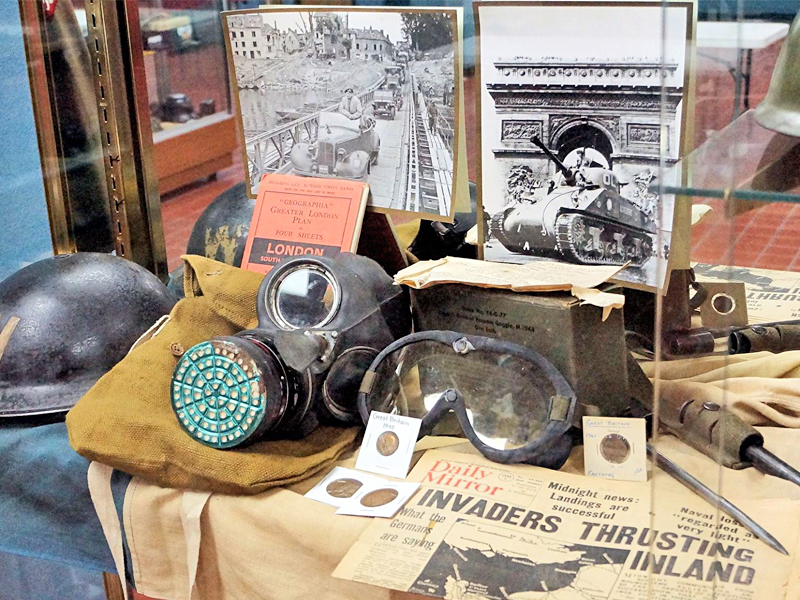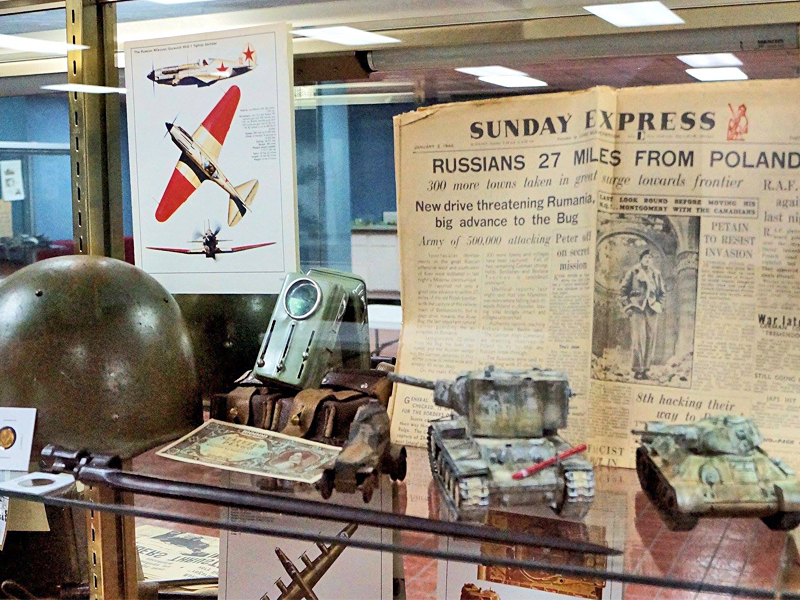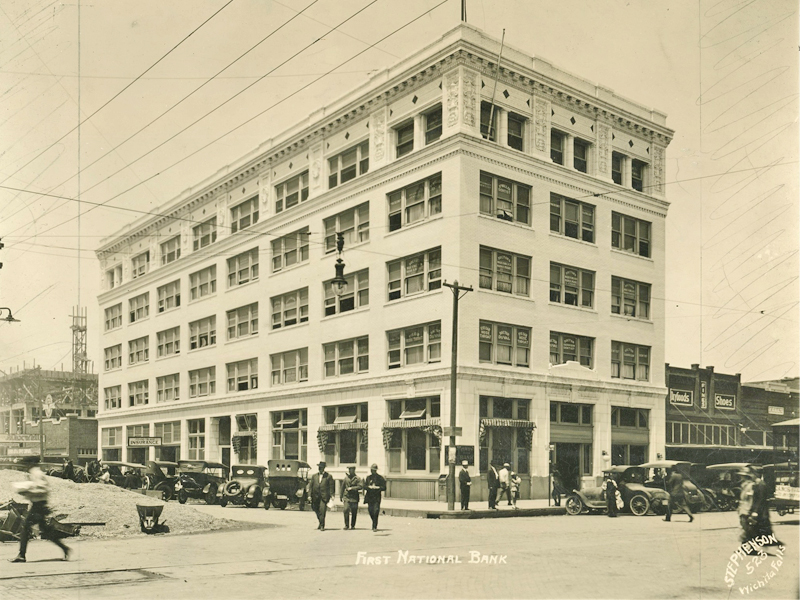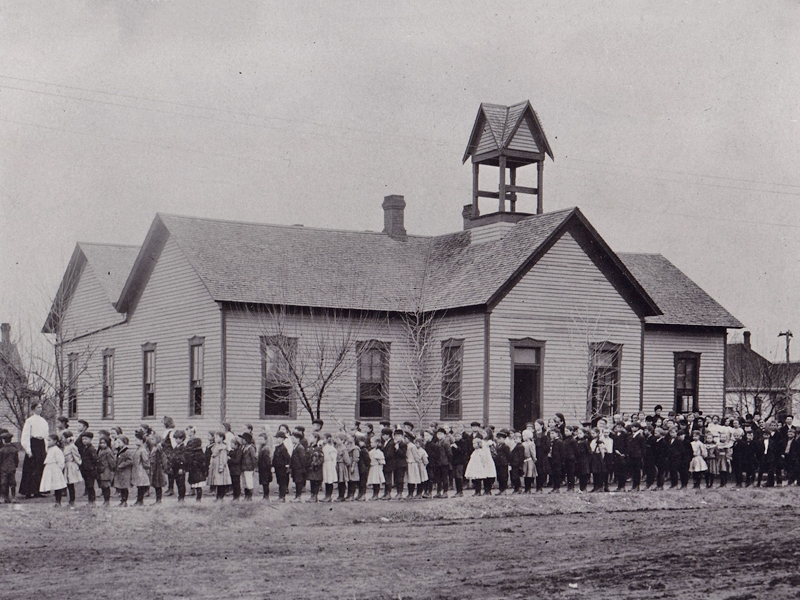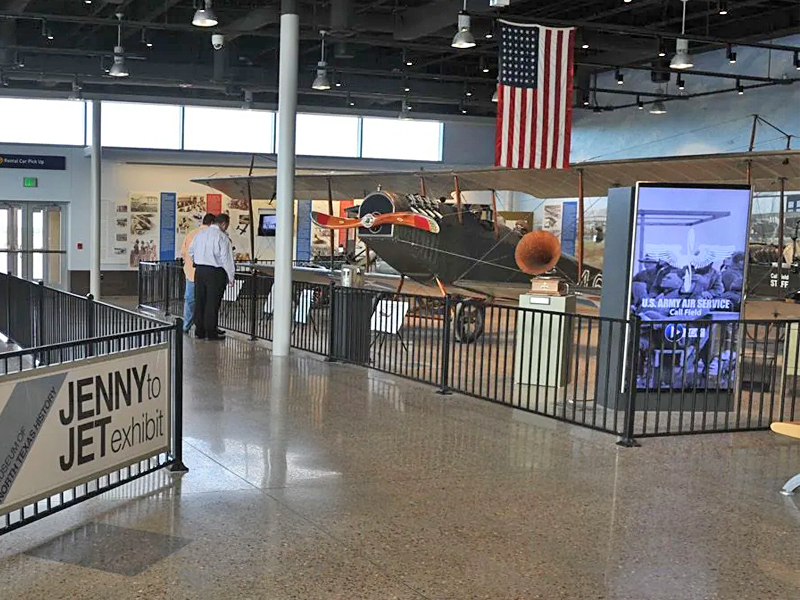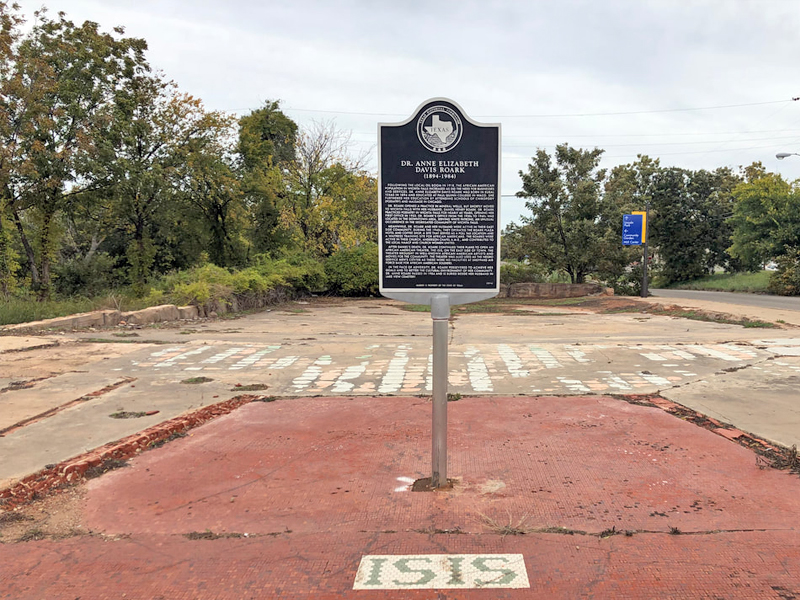Come Explore the Fascinating History of Wichita Falls!
Our storied past begins with a river crossing and a poker game. The city of Wichita Falls has a rich, fascinating history that can still be explored all across town. From the Museum of North Texas History to the beloved downtown architecture, opportunities abound to take a trip into the city’s intriguing past!
Friendly Rivals shape the Wichita Falls Skyline
When observing much of Wichita Falls’ skyline, we can thank a long-ago friendly rivalry between two local bankers for the view.
Bankers Joseph A. Kemp and Robert E. Huff worked together on the Board of the Panhandle National Bank at the corner of 7th and Indiana. In 1892, Kemp became president of the City National Bank at 7th and Ohio, while Huff remained with Panhandle. Huff chose to build a new building for his bank right across the street from his old colleague. In 1903, Panhandle Bank was renamed “First National Bank.”
In 1910, Kemp built the new City National Bank at the corner of 8th and Ohio, which later became the Holt Hotel. Today the Holt Hotel serves as downtown upscale apartment homes, with the first floor housing an Art Gallery. You can still see the old Holt Hotel sign on top of the building.
But this story doesn’t end there. Huff, not about to be outdone, in 1912, announced the building of a new First National Bank at 8th and Indiana (now 8th Street Coffee House and Maniacs Mansion). They moved into the building in 1915.
Five years later, in 1920, Kemp built a new 10-story City National Bank at 8th & Scott.
Later Huff’s First National Bank merged with another local bank, the Wichita National Bank, to form the First Wichita National Bank and moved into the Waggoner Building at 8th & Scott. The Waggoner Building was remodeled in the 1960s, making it a 12-story building (now known as Big Blue, so named for its multi-hued blue exterior).
Once again, Kemp couldn’t be outdone, so City National Bank remodeled to add additional floors making it a 13-story building.
It’s incredible to think that two friendly competitors could have played such a huge part in forming much of the city’s skyline! But this story is only one of many fascinating tales of times gone by in the city of Wichita Falls.
The Museum of North Texas History
A great place to start the journey into the history of Wichita Falls is its Museum of North Texas History. Here you can find exhibits on the local Native Americans, the oil and gas industry, cowboy hats, and dolls, as well as traveling exhibits. One of the museum’s most popular exhibits is Nat’s Hats.
“Nat Fleming owned the Cow Lot, which was a western ware store in Wichita Falls,” said executive director of the museum, Madeline Calcote. “Whenever a customer came in to purchase a new hat, Nat would ask for their old one. He would put the name of the owner and where they were from on the hat and display them in his store. When he closed the store in 2005, he had amassed a large collection of cowboy hats. He donated them to the Museum of North Texas History and they are one of our most popular exhibits!”
The “Jenny to Jet” Exhibit at the Wichita Falls Regional Airport is a satellite exhibit of the museum. The “Jenny” half is dedicated to Call Field, where World War I pilots trained in the Curtiss JN4-D biplane, known as the “Jenny.” We have an authentic Jenny, and she is truly a national treasure. The “Jet” half has a T-38 jet that tells the story of Sheppard Air Force Base. In this one place, people can see the very first U.S. aviation trainer and a jet that is still being used to train pilots today. The exhibit is interactive, use the buttons to learn about the history of Call Field and our Jenny.
She encourages everyone to come to visit the museum. “We have so many exhibits! We love sharing our knowledge about North Texas!”
The Ward (Zales) Building
Located downtown, The Ward Building is another one of the city’s many must-visit places for lovers of history. Built in 1884, this two-story brick building became home to a major player in the jewelry market.
“In 1925, the Ward Building was occupied by Sam Kreuger’s nephew, Morris Zale, the famous founder of the world’s largest retail jeweler, the Zale Corporation,” local historian Becky Trammel said.
Originally drawn by the oil boom, Russian Morris Bernard Zalesfsky (Americanized to “Zale”) immigrated to the area in search of a better life. Morris learned the jewelry trade from his uncle Sam Kreuger and, with the help of his brother William opened the first Zales Jewelry store right here in Wichita Falls. By 1958, the Zale Corporation was listed on the Stock Exchange and became the world’s largest jewelry retailer.
In 2013, Downtown Wichita Falls Development purchased the building and restored it in accordance with Wichita Falls Landmark Commission guidelines.
This historical downtown spot has since become the home of Karat Bar & Bistro’s, Ganache to Go, and Morris Supper Club, some of the city’s most notable eclectic destination restaurants.
Black History in Wichita Falls
Dr. Anne Elizabeth Davis Roark was born in rural Texas in 1894 and educated at Paul Quinn College in Waco. She attended schools of chiropody (podiatry) and massage in Chicago. Dr. Roark practiced podiatry in Wichita Falls for nearly 60 years, opening her first office in 1923. Dr. Roark’s podiatry offices during the 20s, 30s, and 40s were located on Tenth Street and Travis in downtown Wichita Falls. She was the first African-American woman to maintain an office on the west (Caucasian) side of the tracks.
She and her husband built and operated the ISIS Theater on 500 Flood Street. The theater served as a USO for African-American servicemen during WWII. The only remnant of the theater is the mosaic name on the sidewalk, near the Texas Historical Commission Marker honoring Dr. Roark.
Charlye Ola Farris, the daughter of two educators, graduated from Booker T. Washington School and received her law degree from Howard University. She set up a practice in Wichita Falls, becoming the first African-American to practice law in Wichita County. Charlye was later chosen as the county judge pro-tem, making her the first black person to serve as a judge in the south since Reconstruction. She was selected as acting District Judge of the 78th District Court in Wichita County during the summer of 1973.
A Texas Historical Commission Marker honoring Miss Farris is located at 900 Seventh Street, Wichita Falls, on the north side of the courthouse.
Born in 1920 in the East Texas town of Terrell, Colonel Bertram Fuller attended Wiley College in Marshall. Dr. Fuller then earned his medical degree in 1947 at Meharry Medical College in Nashville, Tennessee, the first medical school in the south for African Americans. Following service as a physician in the Army Medical Corps, Dr. Fuller established a practice in Wichita Falls’ east side in 1948. Dr. Fuller became the first African American physician admitted to Texas Medical Association. Along with this honor, Dr. Fuller also was the first African American physician elected to membership in the American Academy of Family Physicians. He served on U.S. District Court Judge Sarah T. Hughes’ Biracial Committee on Schools and was elected in 1970 as President of the Wichita General Hospital Medical staff. In 1988, he received the Wichita County Medical Society’s Distinguished Service Award. Dr. Fuller died in 1994 at the age of 74 but will be remembered for his courage and determination to provide quality medical care to all.
Felix L Lindsey was born in Gallatin County, Kentucky, on October 10, 1847. During the Civil War, Lindsey was tasked with carrying food to Union soldiers camped nearby, and he developed a fondness for the uniform. In 1882, Lindsey joined the U.S. Army and was assigned to the 10th cavalry regiment of “Buffalo Soldiers” at Fort Davis, Texas. A leg wound ended his military career at Fort Sill, Oklahoma, in 1893. Soon after, Lindsey moved to Wichita Falls. Lindsey lived and worked in the African-American community, operating a drapery cleaning service and house cleaning service. Lindsey died in Wichita Falls on September 14, 1939, at the age of 92. Felix Lindsey’s life is a testament to the passion and perseverance of African Americans after the Civil War to prosper and earn respect during a turbulent time in Texas and our nation.
Other Museums or Historical Places
Wichita Falls Museum of Art at MSU
Selections from the museum’s permanent collection of American works like Pollock, Warhol & other notable American artists are regularly exhibited, along with temporary presentations of interdisciplinary and multi-cultural programs of international and national importance.
Wee-Chi-Tah Sculpture
This multi-part piece sculpture by Jack Stevens is of a Comanche woman, her child, two braves, their horses, and a colt set in the natural beauty of rock & flowing water. The woman is testing the river’s depth, as the legend tells, and describes it as “waist-deep”, which is how ”Wee-chi-tah” is translated.
The Kell House Museum
Built in 1909 by local pioneer Frank Kell, the Kell House bridges past, present, and future. The Kell House Museum tells the history of Wichita Falls through the eyes of the Kell family.
Depot Square Historic District
This district, six city blocks centered around the Farmer’s Market at 8th and Ohio Streets, is a journey back through time to include a visit to the Littlest Skyscraper, the old trains & the Route Building, the Museum of North Texas History, and historic Holt Hotel.
Original Kemp Public Library
Mrs. Kemp in 1916 asked her husband, Joseph Alexander Kemp, for a public library building as a Christmas gift. In 1918 Kemp presented the main structure of this building to the citizens of Wichita Falls. Today it is home to the Kemp Center for Arts and is open to the public.
Hamilton Building
Often referred to as the city's crown jewel - The Hamilton Building has long been one of the most prestigious and iconic landmarks in Downtown Wichita Falls. Meticulously maintained to preserve its historic appearance.

